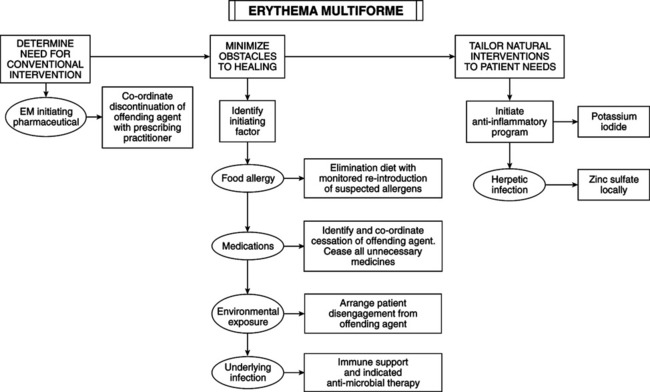• Sudden onset of symmetric, erythematous, edematous, macular, papular, urticarial, bullous, or purpuric skin lesions. • Evolves into “target lesions” (“bull’s eye” lesions with clear centers and concentric erythematous rings). • Characteristic first site: dorsum of hand. • Characteristic distribution: extensor surfaces of extremities with relative sparing of head and trunk. • Rare oral manifestations: range from tender superficial erythematous and hyperkeratotic plaques to painful, deep, hemorrhagic bullae and erosions.
Erythema Multiforme
DIAGNOSTIC SUMMARY
Basicmedical Key
Fastest Basicmedical Insight Engine




